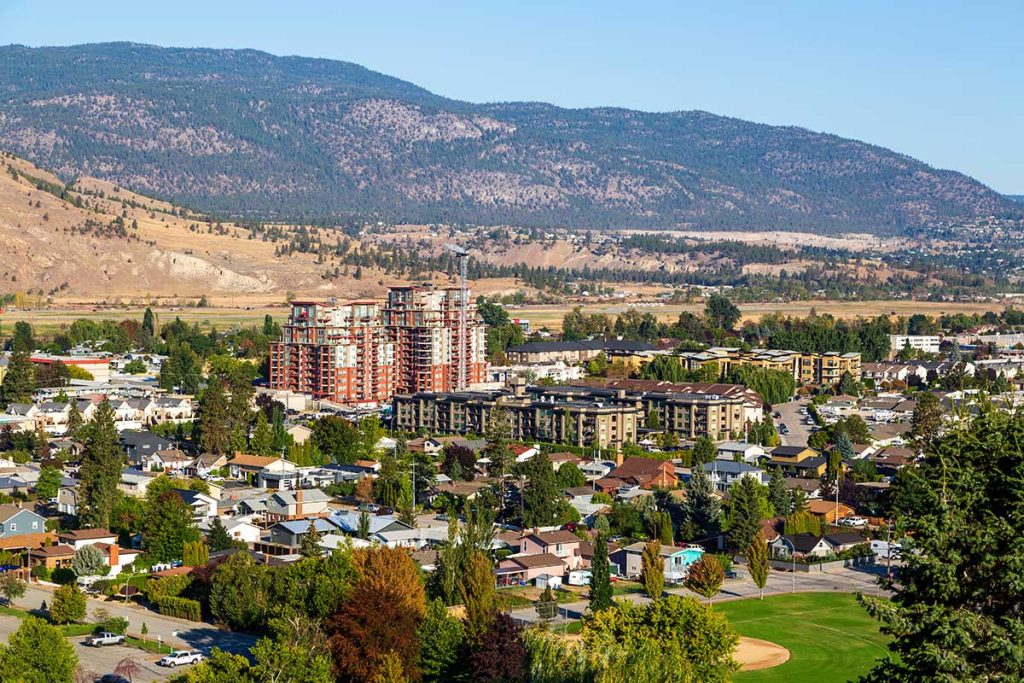PlanH grant fuels Penticton’s push for inclusive housing solutions

The City of Penticton has launched a groundbreaking Social Housing and Infrastructure Plan (SHIP), developed in partnership with local housing and service organizations and supported by a Healthy Public Policy grant from PlanH. Aimed at tackling the city’s growing need for non-market housing, the plan outlines actionable steps, identifies 15 opportunity sites and aligns infrastructure and services to better support diverse community needs.
How we got here
In 2023, the City created a Housing Task Force to review the latest housing needs and city policies with an eye to support the development of more homes in Penticton across the housing spectrum. One of the task force’s 18 recommendations to City Council was for the city to develop a social housing plan to identify a range of non-market housing needs and set up an action plan to address those needs. Housing affordability has been a growing issue in Penticton, and the Task Force recognized that non-market housing helps address the growing cost of housing.
Council endorsed 18 task force recommendations in late 2023. Through 2024 and into 2025 the city planned how to prepare the Social Housing and Infrastructure Plan and developed the plan collaboratively with community partners.
A different approach
Many local governments have housing strategies that outline the needs but are lighter on details of how exactly to advance progress. With the support of the PlanH grant, the City was able to complete a Social Housing Needs Report, to have the latest inventory and projections data, and convene local non-profit housing and service sector partners to discuss the data findings, align partners, match partnerships with specific opportunity sites and recommend informed policy action to take next steps on projects and related initiatives in support of new social housing and social infrastructure.
As the community grows, the housing and social infrastructure requirements both increase. Social infrastructure supports a healthy community, as it encompasses gathering space, social space, and third spaces other than home and work. Social infrastructure serves the needs of various residents, be they physical needs, spiritual fulfillment, or daily needs. The Social Housing and Infrastructure Plan marries social housing and social service opportunities with the goal of making progress on a range of community needs as new projects emerge. This aligns related infrastructure with housing types; for example, day care integrated into workforce housing.
Abundance over scarcity
In 2024, the City Council endorsed three city-owned sites for social housing to be included in the Social Housing and Infrastructure Plan. This strategy helped shift what often happens with city owned land, where a single parcel is made available, and all interested parties compete against each other. Bringing multiple city sites forward at a time shows a willingness to collaborate and an invitation to community partners to do the same. City owned land cannot be the only opportunity sites for non-market housing. Through this mindset of abundance over scarcity, the Social Housing and Infrastructure Plan was able to identify 15 opportunity sites, with most of them owned by community partner representatives and representing realistic near-term opportunities.
Alignment not confinement
The city acted as a convenor to host multiple in-person engagement sessions with partners. A third-party facilitator was brought in to reinforce the city’s role as a partner, not director, of this work. A major benefit of bringing all partners involved in these needs into one room was the opportunity for representatives to see which other organizations are focusing on different needs: for example, seniors, working families, those with co-morbid addictions, or youth. In the sessions, time was dedicated to completing partner profiles outlining the direction of each organization present, and alignment exercises were completed to see which organizations overlap in key areas and could work together on projects.
Focusing on alignment, not confinement, means the Social Housing and Infrastructure Plan does not limit opportunities or put organizations into specific boxes, rather it presents well-aligned opportunities to be explored further among partners and matches those established and emerging partnerships with opportunity sites. In this way, needs across the housing spectrum can be progressed and it’s easier to identify any gaps across the spectrum of needs.
Policy impacts
The policy outcomes from this process include a tactical action plan developed in a consensus-building effort with a focus on actionable next steps. Following Council endorsement of the Social Housing and Infrastructure Plan, recommended implementation measures include tenant protection bylaw measures, pre-zoning for social housing, and regular check-ins with the over 30 community partners involved in the plan development. Through these regular check-ins the partner collective can monitor progress, identify new and emerging opportunities, and identify and overcome barriers experienced in realizing the non-market housing needed in Penticton.
